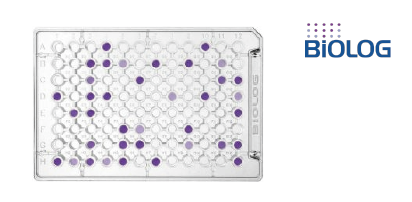
AN (Anaerobes) MICROPLATE
The Biolog AN MicroPlate (Figure 1) is designed for identification of a very wide range of anaerobic bacteria, including the genera Bifidobacterium, Clostridium, Eubacterium, Fusobacterium, Lactobacillus, Lactococcus, Megasphaera, Pectinatus, Pediococcus, Peptostreptococcus, Propionibacterium and Weissella. These genera are important in industrial and environmental applications, especially the food industry where they are responsible for both food production and food. The AN MicroPlate employs the same redox chemistry used in the Biolog GP2 and GN2 MicroPlates
ReadmoreProduct data and images for AN (Anaerobes) MICROPLATE
Specification for AN (Anaerobes) MICROPLATE
AN MICROPLATE
The Anaerobe Database contains over 360 taxa of anaerobic bacteria including over 70 species of lactic acid bacteria. The Biolog AN MicroPlate performs 95 discrete tests simultaneously and gives a characteristic reaction pattern called a “metabolic fingerprint”. These fingerprint reaction patterns provide a vast amount of information conveniently contained on a single Biolog MicroPlate. The patterns are compared using Biolog MicroLog software and database to provide an identification. Other anaerobic kit-based identification methods rely on fewer tests to perform identifications. Therefore an anaerobic organism that was previously characterized by another method may yield an identification result that differs from the Biolog AN MicroPlate & Database. This difference may be due to several factors. When determining the validity of an anaerobic identification result from the Biolog AN MicroPlate and another method, consider the following:
- The MicroLog System bases its identification on a larger number of tests
- The MicroLog System covers more species o The taxonomy of many anaerobic genera is poorly defined